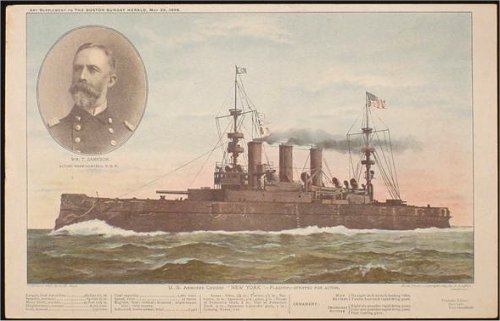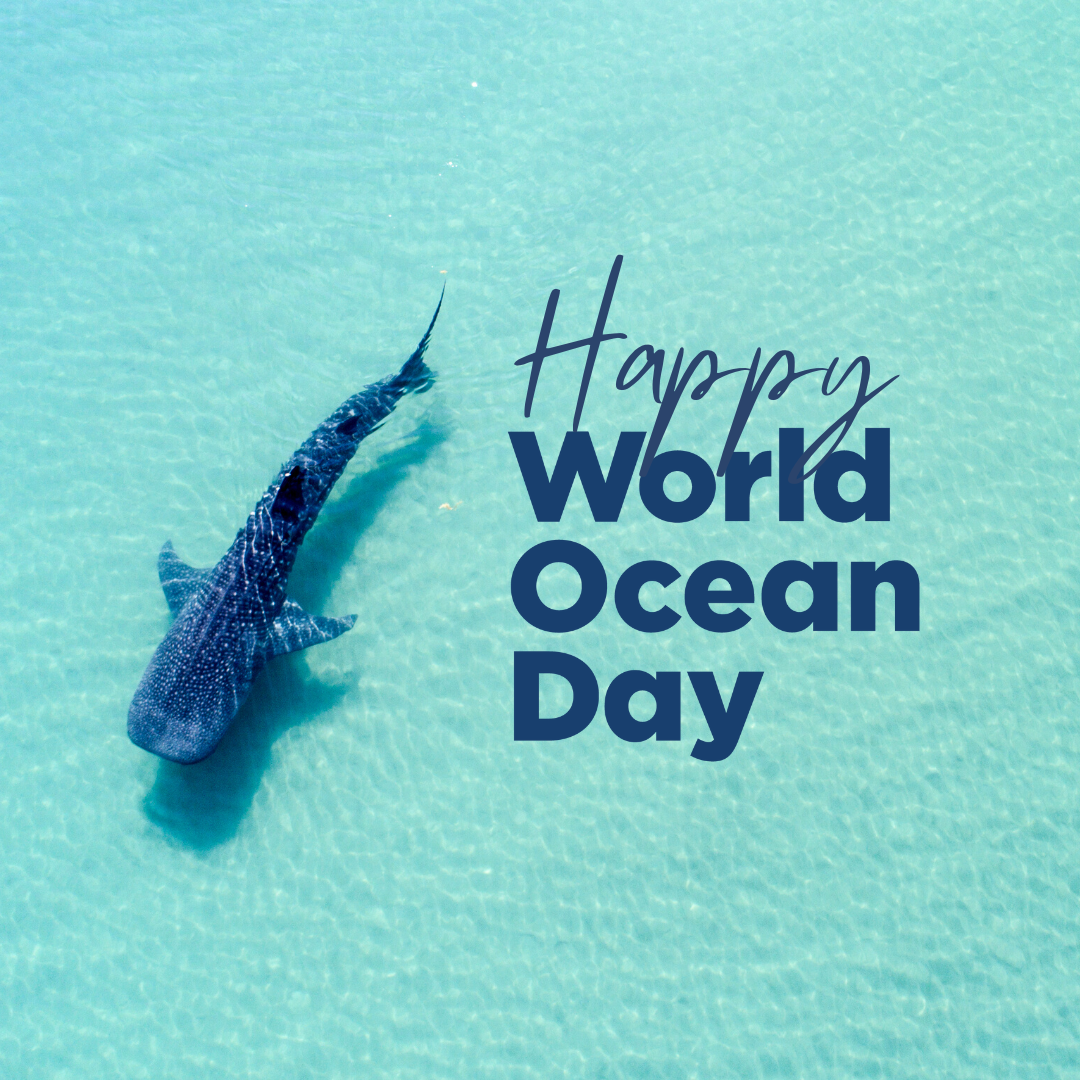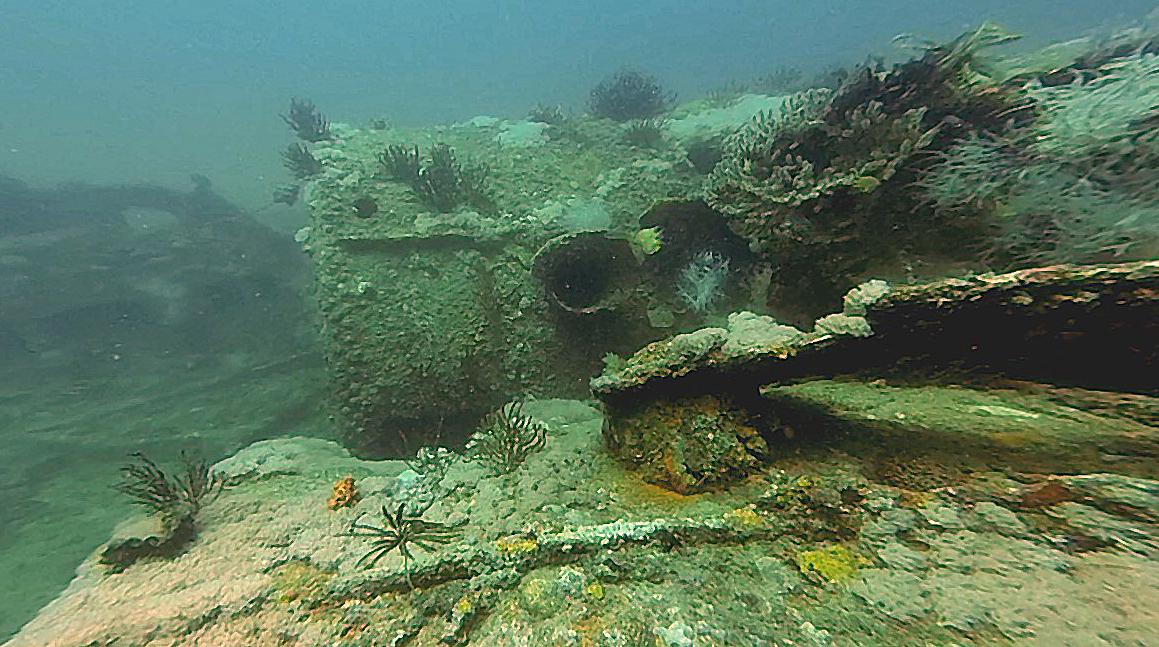
Philippine Diving
Scuba Diving Nomad

World Ocean Day
Happy World Ocean Day Has anyone else wished you a Happy World Ocean Day yet? It seems every day someone or another had declared a national day, there are well over 1,500. Some are trivial, while others bring attention to important issues. World Ocean Day was developed from a concept proposed by Canada’s International Centre for Ocean Development and the Ocean Institute of Canada back in 1992. Today is recognized by many countries and organizations worldwide including the United Nations. In the 1960s and 1970s, water pollution was a growing problem, with our waters reaching crisis status. The Great Lakes became so polluted that it was unsafe to eat fish caught there, not counting the massive dead fish that washed ashore, and even swimming was banned in most locations. The oceans had dead zones and there were predictions that the ocean would die, and after that so would we. Steps were taken to slow and, in some cases, reverse the damage. The oceans are still in peril, and we need to take steps to ensure the future of mankind. Scuba Divers are Environmentally Aware As a group, I see that scuba divers are a very environmentally aware group. Speaking from my experiences, I believe it is because we can see the impact man has on the undersea environment. You can dive hundreds of miles from land and still see litter in the ocean. The worst is the Great Pacific Garbage Patch. Located in the Pacific Ocean between Hawaii and California, The Pacific Gyre, a circular current, has assembled plastics and other debris into an area larger than the State of Texas. On a smaller scale, we can see how local conditions can impact marine life. Some of it is pollution, while others are using practices that are not sustainable. I have seen a healthy reef teeming with fish turned into a rubble field with thousands of dead fish because someone decided to use explosives to stun fish and gather what they could from those that floated to the surface. The act of Shark finning has been a major factor in the decline of sharks worldwide. Shark fins are valued in some cultures for medical reasons or as a sign of wealth. Shark fin soup is a luxury dish in China and is used in expensive dinners and celebrations like weddings. I will admit I do a nice shark steak occasionally, but that is different than having shark fins. The difference is sustainability. US-caught sharks are considered a sustainable choice. Shark finning is a world different and is illegal in the US and becoming illegal in more countries. Sharks are caught, the fins removed, and the shark is then dumped back overboard. Even if the shark was still alive when dumped back into the water, without the fins, the shark will soon die. Embrace World Ocean Day into your Lifestyle I am not a tree-hugger type, I believe we, as the human race, can create a balance between our lives and the life of the planet. Overfishing of certain types of fish has reduced many to the point they are endangered of extinction. If we purchase fish species that are not endangered and caught using sustainable methods, there is no reason we can not add that to our menus. Taking steps to reduce our plastic usage is another big factor. The Great Pacific Garbage Patch is primarily plastic, most of which is too small to be visible to the naked eye. There are many reasons to protect the oceans, do some research and see what you can do to help. There are many marine conservation programs looking for volunteers, even NOAA. In case you have not heard, there will be a new National Marine sanctuary soon at Lake Ontario. If you are a scuba diver or plan on becoming one, there are over 30 organizations that offer special packages. While the programs are not free, they do represent a great value. The cost is much less than a typical dive vacation. Many of them include dive training as a part of their programs. If you are not a diver they will teach you, or if you are, you may pick up some advanced courses. As a volunteer, you will assist with their conservation efforts. Marine Conservation Philippines is an example. You learn and assist in scientific diving, food, and accommodations are included. You will have multiple dives each day, with days off to off gas. They charge about $500 a week. I missed National Running Day yesterday; I had planned to start a running program, but the air quality was too bad. I still plan to start getting back into running, but when air quality is normal. Tomorrow is Coral Triangle Day. The coral triangle is the epicenter of marine diversity. The northern tip if the triangle is Taiwan Straight off the coast of the Philippines, the west angle is Indonesia, and the east edge is Papua New Guinea. I will also be getting myself a pie, so I can celebrate National Strawberry Rhubarb Pie Day.

History of the Spanish Armed Transport San Quintin
History of the Spanish Armed Transport San Quintin ex S/S Andes For decades, we have called the San Quintîn wreck a gun boat. Recently I started to try to find a better description of the San Quintîn to improve what we know and possibly find a photograph or one of a similar vessel. In the process, I found some items that did not fit with this wreck being a gun boat. Over time, I decided to start researching based just on the name and the reason it was sunk. Once I eliminated that it was a gunship, I was able to find other references to a Spanish ship by the same name. After a couple hundreds hours of research, I was able to find an authority reference to the sinking of the Transport San Quintîn. The San Quintîn performed numerous duties until she was scuttled in 1898. Some times she was a mail ship, providing service from Manila to other Spanish outpost. At others, she performed duties as a Armed Transport. Many times she was accompanied by the Armed Transports Cebu and Manila. I am sure there may be those who not accept my version of the ship’s identity on face value, and others who might appreciate the steps that lead me to the history. I will post a separate article, giving more details on the research itself. History of the Armed Transport San Quintîn In 1850, the British and North American Royal Mail Steam Packet Company ordered four identical iron screw Passenger/cargo vessels from the Scottish ship builder William Denny & Brothers. They were the Andes, Alps, Australia and Sydney. The ships were listed as 1275 grt/866 nrt , the length of 236.6 feet (72 meters), beam of 33.2 feet (10.1 meters) and depth of 24 feet (7.3 meters). The ships were mail ships. These were basically passenger ships that also operated under a contract to transport mail. The ships were design to carry 62 passengers in first class and 122 in second class. Prior to these ships, all the ships of this company were side wheelers and most wood. Only a few more side wheeler were built by the company after this and no more wooden ships. In 1850,the British and North American Royal Mail Steam Packet Company changed their name to Cunard Lines. Before being completed, the Australia and Sydney were sold to Australian Royal Mail Steam Navigation company. The Cunard Lines took possession of the S/S Andes on August 18, 1852 and the S/S Alps five weeks later. The S/S Andre made its maiden voyage to New York sailing from Liverpool on December 8, 1852, however, problems with it propulsion system forced them to return to port. The problems were corrected and the ship arrive in New York on Christmas Eve. The Ship continued to sail that route until 1854. In 1854, with the out break of the Crimean War, the British government leased the S/S Andes and the S/S Alps. The two ships were initial used as troop transports and later the S/S Andes was used as a hospital ship. After the war, they returned to service with Cunard Lines. In 1859, the Spanish government bought both the S/S Andes and the S/S Alps. The S/S Andes was renamed to the San Quintîn and the S/S Alps renamed to Mandingo. The San Quintîn’s initial role seems to be primarily as a mail ship. Note on names: The Andes is often shown as Andes (1852). This is to keep it from being confused with two later mail ships named Andes in the 1900s. San Quintîn is also seen spelled as San Quentin. While there is not a definitive history of the San Quintîn, there are many historical references to her. Cuba seems to have been one of the early assignments for the San Quintîn. The New York Times has a number of mentions of her arrivals and departure from Havana. This is from a NYT story of March 1862: The steam transport San Quintin, of the Spanish Navy, which arrived a short time ago from Vera Cruz with nearly two hundred sick soldiers, left again for the same place the day before yesterday, with provisions for the army and forage and maize for the horses and cattle of the expedition. The Micronesioan Area Research Center, Guam published in 1998 a book titled: Chronicle of the Mariana Islands. Recordings in the Agaña Parish church 1846-1899. This book is a translation of the Parish records of the church in Guam. Most of the record was written by Father Aniceto Ibáñez and records the activities of the church and reflects the life in Guam. Only the introduction of the book is available on line. The introduction is mostly about the priest of the church. It notes that the entry for 1884 is short but does include that Father Franciso Resano return to Manila for health reasons aboard the steamship San Quintîn. 21 August 1885 the San Quintîn arrives in Yap to establish a capital for the Caroline Island. The following day the ship Manila arrives. The San Quintîn, under the command of Capt. Guil de Espana, brought the new Governor-general, two priest (one being Father Aniceto Ibáñez as vicar) and others to Yap. Between the two ships they had soldiers, laborers and the materials needed to build a church and the governor’s residence. The ships were unloaded, however, the governor did not like the location. The group spent three days searching the surrounding areas until they found a location the governor’s liking. He sent runners out to notify the locals to be at the location the following morning for a flag raising ceremony. When the group arrived back at the ship, they found the German flag raised and the German cruiser Iltis in port. The Spanish withdrew, however, the public backlash almost caused a war between Germany and Spain. Some reports state that it was the S/S Carriedo that accompanied the San Quintîn. This was the transport Manila’s name before being purchased by Spain. It was owned by a private firm doing mail service between Manila and Singapore. March 14 1887 the transport Manila transported a new Governor-general by the name of Posadillo, soldiers, priest, workers and colonist to the island of Pohnpei. They were to set up a government and establish a colony. The actions of the new government was harsh on the natives mostly the actions of the governor’s executive Manuel Torres, a Spaniard born in the Philippines. At the end of June, the natives refused to work. Posadillo send Torres to the chiefs to demand they attend a meeting, Spanish soldiers were sent to enforce the attendance. The natives killed most of the group. Those that survived reported back and the colony evacuated to a ship that had been grounded and damaged. The Governor stayed in his residence until 3 July, when he tried to escape to the ship. He and all of is staff were killed, however, the Filipino troops were left unharmed. The natives offered to let the colonist return home unharmed but they stayed onboard ship. In August, The San Quintîn arrived on a routine run and discovered what had happened. She left behind supplies and reported the event to Manila. In 1891, The transports—the Manila, Cebu, San Quintîn, and Marquez de Duero carried an attack force of 1,240 men against the Maguindanao and Maranao (Muslims in the southern portion of the Philippines). The attack was unsuccessful. Moro reports had the transports Manila, Cebu, and San Quintîn bringing supplies to the Spanish Colonies in the area until 1894. No Spanish records confirm this. Current records show that the San Quintîn was decommissioned in 1894. In his nearly 1,000 page book “ The Spanish American War” published in 1911, the noted Naval Historian Rear Admiral USN (retired) French Ensor Chadwick discusses every naval aspect of the war. At the beginning of the war, then Captain Chadwick was chief of staff to Admiral Sampson, commander of the North Atlantic Fleet. The Captain was also the commander of the USS New York ACR-2. The book shows a partial transcript of a planning meeting held on March 15,1898. Admiral Montojo meet with General Primo de Rivera and the Governor-General to discuss defense plans. The admiral’s plans were approved. The admiral issued orders to Captain del Rio to sink the transport San Quintîn and two old merchant vessels. While not specifying the type of ship, Admiral Montojo’s battle report verifies that the San Quintîn was sunk as ordered. Storms and the passage of time has reduced the wreck. At the time of her being scuttled she would have been just below the surface. It seems likely that the majority of the ship is below the sea floor. A great deal of time went into research and writing this article and I retain full copy right over its contents. Unless noted, the images used here are believed to be public domain. I will authorize rights to use this content provided that the following is included: Contains material © Charles W. Davis Jr.

Philippines
Diving Malapascua Island Cebu Philippines I recently had the opportunity to take a working vacation to Malapascua Island. The island is located in the strait between the Island provinces of Cebu and Leyte in the Philippines. It is about a four and a half hours by bus or a two and a half hours by car trip from the Cebu International Airport. At the northern tip of Cebu you will find the town of Maya which provides ferry service to Malapascua which is about a 30 minutes boat ride away. The island is small, only about 1.6 km long and .6 km wide. Most of the resorts are along a white sand beach at the southern tip of the island called Bounty Beach. Boats from Maya drop passengers at the west end of the beach. West and north of the beach is the area that is generally called the village. It is the largest of the nine little settlement around the island and the only one with paved roads. Most people walk to their destination but if you want a ride you can catch a motor scooter and back ride. The infrastructure is basic, some will even say primitive. Fresh water is limited as is electricity. There are no high rises or international hotel chains. It is a typical island fishing settlement. In the early 1990s, the island had a small tourism industry. It was mainly backpackers who stayed for the wonderful white sand beach, crystal clear waters and the genuinely friendly people. There were a handful of beach huts for rent. Back then Lonely Planet called it an undiscovered paradise. Dik de Boer a Dutchman and his Filipino wife read a Lonely Planet article and visited the island in 1996. They loved it and when they returned the following year they brought scuba gear and a portable compressor with them. Following tips from local fisherman they were soon diving with Thresher sharks, Hammerheads and Manta Rays.